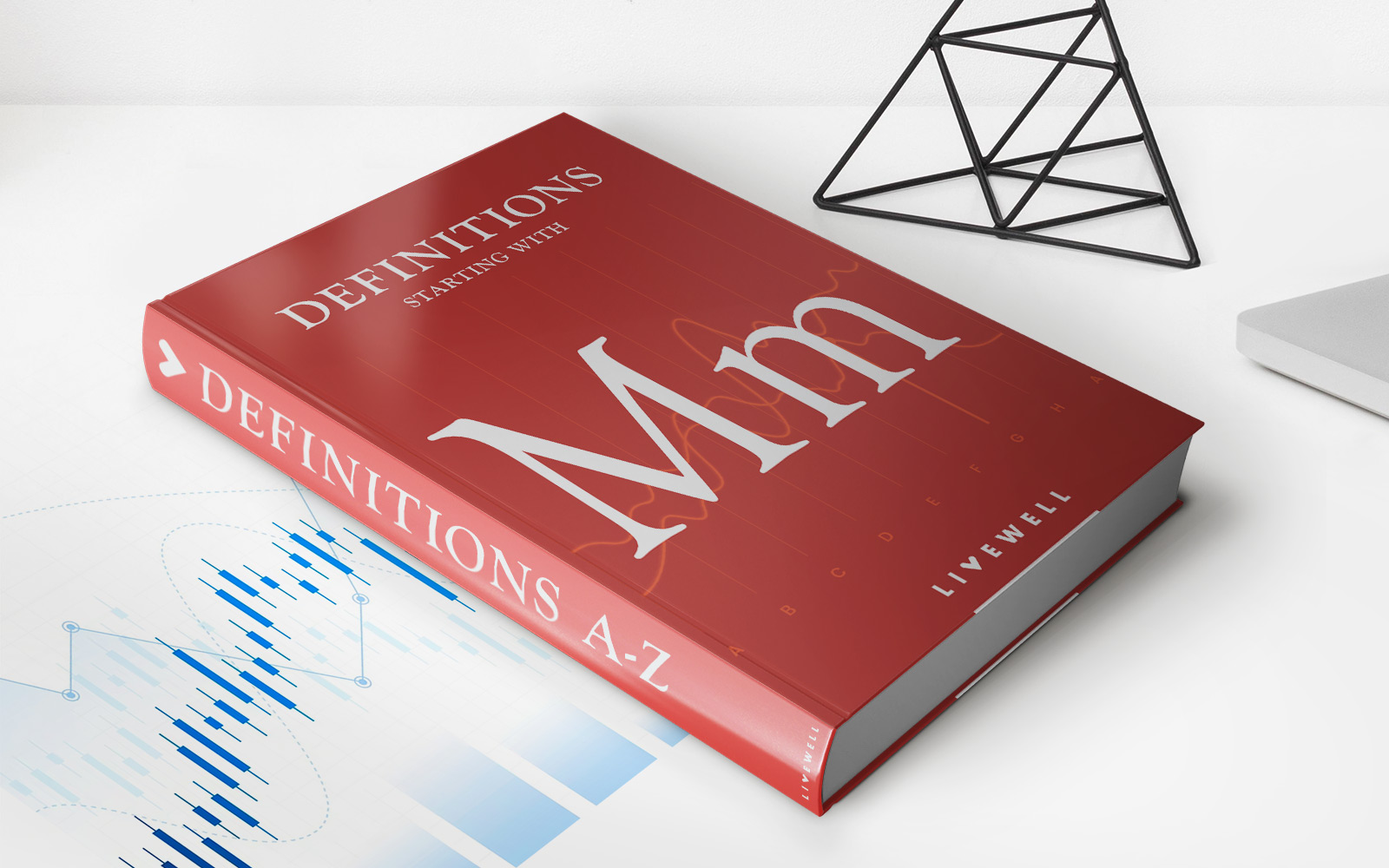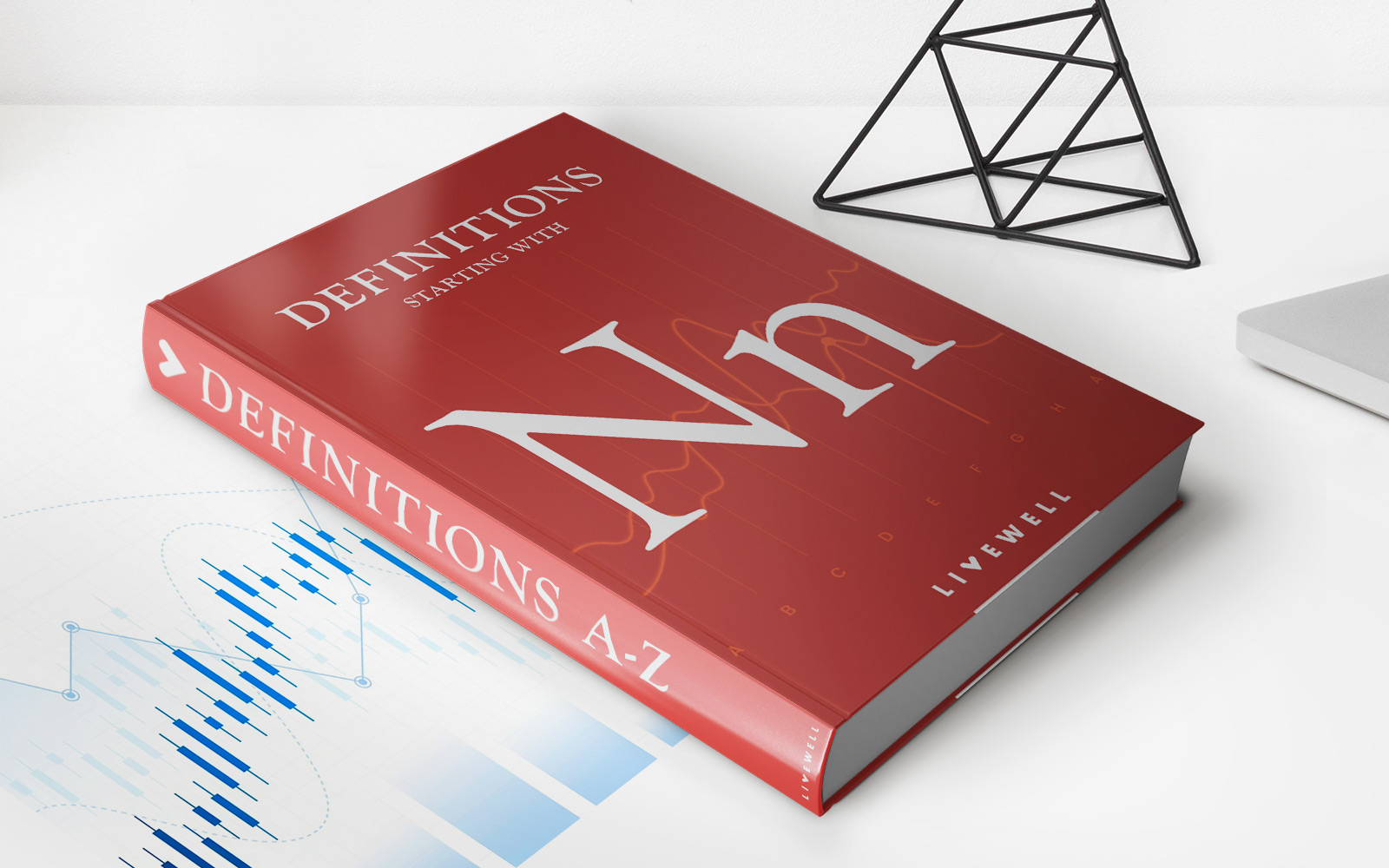Home>Finance>How To Use Life Insurance In Your Retirement Planning


Finance
How To Use Life Insurance In Your Retirement Planning
Published: January 21, 2024
Learn how to incorporate life insurance into your retirement planning. Discover the financial benefits and strategies to secure your future.
(Many of the links in this article redirect to a specific reviewed product. Your purchase of these products through affiliate links helps to generate commission for LiveWell, at no extra cost. Learn more)
Table of Contents
- Introduction
- Understanding Life Insurance
- Types of Life Insurance
- Why Include Life Insurance in Retirement Planning
- Incorporating Life Insurance into Your Retirement Plan
- Determining Your Life Insurance Needs
- Purchasing Life Insurance for Retirement
- Maximizing the Benefits of Life Insurance in Retirement
- Tax Implications of Life Insurance in Retirement
- Evaluating and Adjusting Your Life Insurance Coverage
- Conclusion
Introduction
Planning for retirement is a crucial financial endeavor that requires careful consideration and strategic decision-making. While traditional methods such as savings accounts, investments, and pension plans are commonly utilized, one often overlooked tool for retirement planning is life insurance. Life insurance can serve as a valuable asset to safeguard your financial future, providing both protection for your loved ones and additional benefits for your retirement years.
Understanding how life insurance can be utilized in retirement planning is essential to ensure you have a comprehensive strategy that meets your long-term financial goals. This article will delve into the various aspects of incorporating life insurance into your retirement plan, including the different types of life insurance, the reasons for including it in your retirement planning, how to determine your life insurance needs, and tips for purchasing and maximizing the benefits of life insurance in retirement.
Whether you are in the early stages of your career or nearing retirement, it is never too early or too late to start considering how life insurance can play a vital role in your retirement strategy. By embracing life insurance as a part of your overall financial plan, you can better protect your loved ones and ensure a secure and comfortable retirement.
Understanding Life Insurance
Before diving into how life insurance can be utilized in retirement planning, it is essential to have a clear understanding of what life insurance is and how it works. Life insurance is a contract between an individual (the policyholder) and an insurance company, where the policyholder pays regular premiums in exchange for a death benefit that is paid to the designated beneficiaries upon the policyholder’s death.
Life insurance policies come in various forms, but the two primary types are term life insurance and permanent life insurance. Term life insurance provides coverage for a specific term, typically 10, 20, or 30 years. Permanent life insurance, on the other hand, offers lifelong coverage and includes a cash value component that accumulates over time.
The payout from a life insurance policy, also known as the death benefit, is typically tax-free and can be a valuable financial resource to cover funeral expenses, outstanding debts, and provide financial security for loved ones left behind.
Life insurance policies also offer additional features and benefits, such as policy loans, accelerated death benefits, and the ability to convert term policies into permanent policies. These features can provide flexibility and additional financial options to policyholders.
Understanding the basics of life insurance is important in order to make informed decisions about how to incorporate it into your retirement planning. By considering the different types of life insurance and the unique features and benefits they offer, you can better tailor your life insurance strategy to align with your retirement goals and objectives.
Types of Life Insurance
When considering how to incorporate life insurance into your retirement planning, it’s important to familiarize yourself with the different types of life insurance available. Each type has its own features and benefits that can contribute to your overall retirement strategy.
1. Term Life Insurance: Term life insurance provides coverage for a specific period, typically ranging from 10 to 30 years. It is more affordable compared to permanent life insurance and is ideal for individuals who want coverage for a specific timeframe, such as paying off a mortgage or sending children to college. However, once the term expires, coverage ceases, and there is no cash value component.
2. Whole Life Insurance: Whole life insurance provides lifelong coverage with a guaranteed death benefit. Premiums for whole life insurance are higher than term life insurance but remain level throughout the policyholder’s life. Whole life insurance also accumulates cash value over time, which can be accessed through loans or withdrawals.
3. Universal Life Insurance: Universal life insurance is a flexible option that allows policyholders to adjust the death benefit and premium payments based on their changing needs. The policy’s cash value grows over time and can be utilized to cover future premiums or withdrawn to supplement retirement income. Universal life insurance offers more flexibility but also requires active management from the policyholder.
4. Variable Life Insurance: Variable life insurance combines a death benefit with an investment component. Policyholders have the opportunity to allocate their premiums among different investment options, such as stocks, bonds, and mutual funds. The cash value of the policy can fluctuate based on the performance of the underlying investments, offering potential growth but also comes with more risk than other types of life insurance.
Choosing the right type of life insurance depends on your individual circumstances, financial goals, and risk tolerance. It’s important to evaluate the features and benefits of each type, seeking guidance from a financial advisor if needed, to determine which option aligns best with your retirement planning objectives.
Why Include Life Insurance in Retirement Planning
Life insurance is often associated with providing financial security for loved ones after passing away. However, it can also be a valuable tool in retirement planning. Including life insurance in your retirement strategy offers several key benefits:
1. Income Replacement: Life insurance can serve as a source of income replacement for your loved ones in the event of your unexpected death during your retirement years. The death benefit from a life insurance policy can help bridge the financial gap left behind and ensure your loved ones are protected financially.
2. Legacy Planning: Life insurance allows you to leave a legacy for your beneficiaries, whether it’s to provide for their financial needs or to leave a charitable donation. By incorporating life insurance into your retirement plan, you can ensure that your desired legacy is fulfilled.
3. Supplement Retirement Income: Permanent life insurance policies, such as whole life or universal life insurance, have a cash value component that accumulates over time. This cash value can be accessed during retirement through policy loans or withdrawals, providing an additional source of tax-advantaged income.
4. Cover Estate Taxes: Life insurance can help cover any estate taxes that may be due upon your passing. This ensures that your heirs receive their intended inheritance without the burden of tax liabilities.
5. Pays Off Debts: Life insurance can be used to pay off any outstanding debts you may have, such as mortgages, loans, or credit card debt. This relieves your loved ones from the financial responsibility of these obligations and provides them with a clean slate.
By including life insurance in your retirement planning, you can protect your loved ones, leave a lasting legacy, supplement retirement income, and address any financial obligations that may arise. It provides an extra layer of security and peace of mind, ensuring that your retirement years are financially stable and fulfilling.
Incorporating Life Insurance into Your Retirement Plan
Incorporating life insurance into your retirement plan requires careful consideration and strategic decision-making. Here are some key steps to take when incorporating life insurance into your retirement strategy:
1. Assess Your Needs: Begin by evaluating your financial goals and retirement objectives. Determine if you have any outstanding debts, such as mortgages or loans, and consider the needs of your dependents or beneficiaries. This assessment will help you determine the type and amount of life insurance coverage you require.
2. Consult with a Financial Advisor: Seeking guidance from a financial advisor who specializes in retirement planning can be instrumental in effectively incorporating life insurance into your retirement plan. They can help you navigate the complexities of various life insurance policies, assess your risk tolerance, and determine the appropriate amount of coverage for your needs.
3. Choose the Right Type of Life Insurance: Consider the different types of life insurance available and select the one that aligns with your retirement goals. If you prefer a fixed premium and lifelong coverage, whole life insurance may be suitable. If flexibility is important to you, universal life insurance or variable life insurance might be more suitable options.
4. Determine Your Coverage Amount: Calculating the right coverage amount is crucial in ensuring your beneficiaries are adequately protected. Take into account factors such as your income, potential future expenses, outstanding debts, and the needs of your dependents. A financial advisor can assist you in determining the appropriate coverage amount based on your specific situation.
5. Consider Policy Riders: Policy riders are additional features that can be added to your life insurance policy to enhance its functionality. Popular riders include the option to accelerate the death benefit in case of terminal illness or long-term care needs. Evaluate these riders and determine if they align with your retirement objectives.
6. Review and Adjust Regularly: Life insurance needs can change over time, especially as you progress through different life stages. It’s essential to review your policy periodically and make adjustments as necessary. This could involve increasing or decreasing coverage, updating beneficiaries, or modifying policy riders.
Incorporating life insurance into your retirement plan takes careful planning and consideration. By assessing your needs, consulting with a financial advisor, choosing the right type of life insurance, determining the coverage amount, considering policy riders, and reviewing your plan regularly, you can integrate life insurance seamlessly into your retirement strategy, providing an additional layer of financial security for yourself and your loved ones.
Determining Your Life Insurance Needs
When incorporating life insurance into your retirement plan, it’s crucial to accurately determine your life insurance needs. Here are some factors to consider when assessing how much coverage you require:
1. Financial Obligations: Start by considering your financial obligations, such as outstanding debts like mortgages, loans, or credit card balances. Life insurance can help ensure that these obligations are covered in the event of your passing, preventing loved ones from inheriting a burden.
2. Income Replacement: Evaluate how much income your loved ones would need to maintain their current standard of living if you were no longer there to provide for them. This includes covering basic living expenses, education costs, and any other financial needs they may have. Consider your family’s current and future financial goals when estimating the income replacement amount.
3. Dependents: Take into account the number and needs of your dependents. If you have young children or individuals who rely on your financial support, you may need a higher coverage amount to ensure their future well-being.
4. Retirement Savings Gap: Assess the gap between your current retirement savings and the desired amount. Life insurance can bridge this gap and provide an additional source of income for your retirement years. Consider your retirement goals, lifestyle expectations, and any potential healthcare expenses that may arise.
5. Legacy Planning: If leaving a financial legacy for your loved ones or making a charitable contribution is important to you, factor this into your life insurance needs. Consider any specific financial goals or aspirations you may have for your beneficiaries.
6. Existing Life Insurance: If you already have life insurance coverage, evaluate whether it is sufficient for your current needs. Take into account any changes in your financial situation or family circumstances that may require adjusting your coverage amount.
It is recommended to consult with a financial advisor or life insurance professional to ensure an accurate assessment of your life insurance needs. They can help you navigate through the various factors involved and provide guidance tailored to your specific situation.
Remember that life insurance needs can change over time, so it’s important to review and adjust your coverage periodically. Regularly reassessing your life insurance needs ensures that your retirement plan remains aligned with your financial goals and adequately protects yourself and your loved ones.
Purchasing Life Insurance for Retirement
When purchasing life insurance for retirement, it’s important to take several factors into consideration to ensure you choose the right policy for your needs. Here are some key steps to follow when buying life insurance for retirement:
1. Evaluate Your Options: Research and compare different insurance providers to find the best one for your needs. Consider factors such as their financial stability, reputation, customer service, and product offerings. Look for an insurer that specializes in retirement planning or has experience in providing life insurance solutions for retirees.
2. Determine the Type of Policy: Based on your retirement objectives, determine whether term life insurance or permanent life insurance is more suitable. Consider your financial goals, risk tolerance, and the need for lifelong coverage or cash value accumulation. It can be helpful to consult with a financial advisor who can guide you in making the right choice.
3. Assess the Coverage Amount: Calculate the appropriate coverage amount based on your financial obligations, income replacement needs, and retirement goals. Consider factors such as outstanding debts, burial expenses, ongoing financial support for dependents, and any specific legacy or charitable goals you may have. Ensure the coverage amount adequately addresses your retirement needs.
4. Get Multiple Quotes: Obtain quotes from different insurance providers to compare premiums and coverage terms. Take into account any discounts or benefits offered by the insurers, such as healthy lifestyle rewards or policy riders. Compare the quotes to find the most cost-effective option that meets your coverage requirements.
5. Understand Policy Terms and Conditions: Read and understand the policy terms and conditions before making a purchase. Pay attention to details such as premium payment frequency, renewal options, exclusions, and any limitations on benefits. It’s essential to have a clear understanding of what the policy includes and excludes, ensuring you are fully informed before committing.
6. Seek Professional Advice: Consider seeking guidance from a financial advisor or insurance professional who specializes in retirement planning. They can provide valuable insights, help you navigate the complexities of life insurance, and ensure that the policy aligns with your retirement goals and objectives.
7. Review and Update Regularly: After purchasing life insurance for retirement, periodically review your policy to ensure it remains aligned with your changing needs. Life events such as marriage, childbirth, or changes in financial status may require adjustments to your coverage amount or beneficiaries.
Purchasing life insurance for retirement is a significant decision that requires careful thought and consideration. By evaluating your options, determining the type and coverage amount, getting multiple quotes, understanding the policy terms and conditions, seeking professional advice, and reviewing the policy regularly, you can make an informed choice that provides financial security during your retirement years.
Maximizing the Benefits of Life Insurance in Retirement
Life insurance can offer several benefits when it comes to maximizing your retirement planning strategy. Here are some ways to make the most of your life insurance policy during your retirement years:
1. Utilize the Cash Value: If you hold a permanent life insurance policy, such as whole life or universal life insurance, it accumulates a cash value over time. You can access this cash value through policy loans or withdrawals to supplement your retirement income or cover unexpected expenses. However, it’s important to consider the impact on the policy’s death benefit and any tax implications before accessing the cash value.
2. Plan for Long-Term Care: Long-term care expenses can be a significant financial burden during retirement. Some life insurance policies offer long-term care riders or accelerated death benefit options that allow you to tap into the death benefit to cover the costs of long-term care services. This can help preserve your retirement savings and provide for your healthcare needs in case of a chronic illness or disability.
3. Coordinate with Other Retirement Accounts: Coordinate your life insurance policy with other retirement accounts, such as IRAs or 401(k)s, to create a comprehensive plan. Consider how your life insurance coverage can complement your retirement investments and strategize accordingly. Consult with a financial advisor who can guide you in optimizing the balance between life insurance and other retirement savings vehicles.
4. Review and Adjust Coverage: Regularly review your life insurance coverage to ensure it remains aligned with your changing needs and financial goals. As you progress through different life stages and experience events such as paying off debts or your children becoming financially independent, you may need to adjust your coverage amount. Make any necessary updates to ensure your policy remains relevant and effective.
5. Consider Policy Exchanges or Upgrades: Depending on your circumstances, it may be beneficial to exchange or upgrade your existing life insurance policy for one that better aligns with your retirement goals. For example, if you initially purchased a term life insurance policy, you might consider converting it into a permanent policy to accumulate cash value and provide lifelong coverage.
6. Coordinate with Estate Planning: Integrate your life insurance policy with your overall estate planning strategy. Review and update your beneficiaries regularly to ensure they align with your wishes. If estate taxes may be a concern, your life insurance policy can help cover those costs, allowing your heirs to receive their inheritances intact.
By maximizing the benefits of your life insurance policy during retirement, you can enhance your financial security, address potential long-term care needs, coordinate with other retirement accounts, review and adjust your coverage as necessary, consider policy exchanges or upgrades, and coordinate with estate planning. Through strategic planning and consistent evaluation, you can make the most of your life insurance to support a comfortable and worry-free retirement.
Tax Implications of Life Insurance in Retirement
Understanding the tax implications of life insurance in retirement is crucial for effective financial planning. Here are some key considerations regarding the tax treatment of life insurance:
1. Death Benefit: The death benefit received by the beneficiaries upon the policyholder’s death is generally tax-free. This can be a significant advantage, ensuring that the intended recipients receive the full benefit without any income tax liabilities.
2. Cash Value Growth: In the case of permanent life insurance policies, the cash value component can grow tax-deferred. This means that you won’t owe taxes on the cash value growth until you make a withdrawal or take a policy loan. However, if you surrender the policy, any cash value accumulated beyond the total premiums you paid may be subject to income taxes.
3. Policy Loans: When you take a loan against the cash value of your life insurance policy, the funds are generally tax-free. Policy loans are not considered taxable income, as they are typically treated as an advance on the death benefit rather than taxable distribution.
4. Withdrawals: If you choose to withdraw funds from the cash value of your policy, the earnings will be subject to income tax. However, the withdrawals are typically subject to a first-in, first-out (FIFO) tax treatment, where the most recent contributions are considered taxable before the accumulated earnings.
5. Surrenders and Cancellations: Surrendering or canceling your life insurance policy may have tax implications. Any cash value in excess of the total premiums paid will be subject to income taxes at your ordinary income tax rate. It’s important to carefully consider the tax consequences before surrendering a policy.
6. Estate Taxes: Depending on the size of your estate, life insurance proceeds may be subject to estate taxes. However, proper estate planning strategies, such as setting up an irrevocable life insurance trust (ILIT), can help mitigate these tax liabilities and ensure that the death benefit is passed on to your beneficiaries intact.
It is crucial to consult with a tax professional or financial advisor who specializes in retirement planning and taxation to fully understand the tax implications of your life insurance policy. They can provide personalized guidance based on your specific situation and help you make informed decisions.
Remember that tax laws can change over time, so staying informed and periodically reviewing your life insurance policy’s tax implications is essential to optimizing your retirement plan.
Evaluating and Adjusting Your Life Insurance Coverage
Evaluating and adjusting your life insurance coverage is a crucial step in your overall retirement planning strategy. Here are some key considerations to help you make informed decisions regarding your life insurance coverage:
1. Review Your Financial Situation: Regularly assess your financial situation to determine if your current life insurance coverage aligns with your needs. Consider factors such as changes in income, outstanding debts, dependents, and overall financial goals. If your circumstances have significantly changed, it may be necessary to adjust your coverage amount.
2. Reassess Your Goals and Expenses: Evaluate your retirement goals and anticipated expenses to ensure your life insurance coverage adequately supports them. Consider factors such as healthcare costs, long-term care needs, legacy planning, and income replacement for your loved ones. Adjust your coverage accordingly to address any gaps or changing priorities.
3. Conduct a Policy Performance Review: Assess the performance of your life insurance policy, particularly if you have a permanent life insurance policy with a cash value component. Review the cash value growth, policy expenses, investment options (if applicable), and any policy riders or benefits. Understand how the policy is performing and whether it meets your expectations and long-term goals.
4. Evaluate Policy Riders and Options: Assess the policy riders and options available with your life insurance coverage. Consider if they align with your current needs and if they provide value for the premium you are paying. For example, if you have a long-term care rider, evaluate if it still meets your requirements or if there are more suitable options available.
5. Seek Professional Advice: Consulting with a financial advisor or insurance professional can provide valuable insights into your life insurance coverage. They can assist in evaluating your policy, assessing your needs, and determining if any adjustments or enhancements are necessary. A professional can offer guidance based on their expertise and help you optimize your coverage for retirement planning.
6. Consider Alternatives: If you find that your current life insurance policy no longer meets your needs, explore alternative options. This may involve purchasing additional coverage, adjusting the coverage amount, or changing to a different type of policy. A financial advisor can provide guidance on potential alternatives and help you make an informed decision.
7. Regularly Revisit and Adjust: Life insurance needs can change over time, so it’s important to regularly revisit and adjust your coverage as necessary. Life events such as marriage, divorce, the birth of a child, or changes in financial circumstances may warrant updates to your policy. Regularly reviewing and adjusting your coverage ensures it remains aligned with your evolving needs and goals.
By regularly evaluating and adjusting your life insurance coverage, you can ensure that it remains in sync with your financial goals and retirement planning objectives. Stay proactive and seek professional advice to make informed decisions about your coverage and optimize its benefits for a secure and comfortable retirement.
Conclusion
Incorporating life insurance into your retirement planning can provide valuable benefits and enhance your overall financial security. By understanding the different types of life insurance available, determining your coverage needs, and maximizing the benefits offered, you can create a comprehensive retirement strategy that addresses both your current and future financial needs.
Life insurance serves as a tool for income replacement, legacy planning, and supplementing retirement income. It can help protect your loved ones, cover financial obligations, and ensure a smooth transition for your beneficiaries. Additionally, the cash value component of permanent life insurance policies can offer tax-advantaged growth and provide a source of funds for retirement purposes.
When purchasing life insurance for retirement, it’s important to evaluate your options, choose the right type of policy, and determine the coverage amount that suits your specific needs. Regularly reviewing and adjusting your life insurance coverage is crucial to ensure it remains aligned with your changing circumstances and financial goals.
Consulting with a financial advisor or insurance professional who specializes in retirement planning can provide valuable guidance throughout the process. They can help assess your needs, evaluate policy options, and ensure that your life insurance coverage fits seamlessly into your retirement plan.
Remember that life insurance is just one piece of the puzzle when it comes to retirement planning. It’s important to have a well-rounded strategy that includes savings, investments, and other forms of retirement income. By combining these various elements and regularly reviewing your plan, you can create a strong foundation for a financially secure and fulfilling retirement.
In conclusion, integrating life insurance into your retirement plan can provide peace of mind, protect your loved ones, and offer additional financial resources. Take the time to assess your needs, explore your options, and involve professional expertise to develop a comprehensive retirement strategy that optimizes the benefits of life insurance. By doing so, you can confidently embark on your retirement journey, knowing that you have taken steps to secure your financial future.














